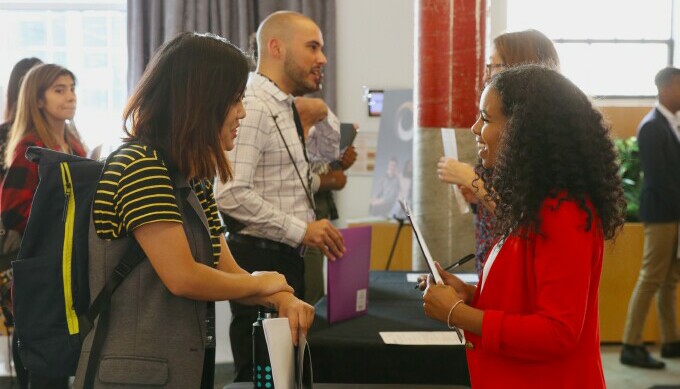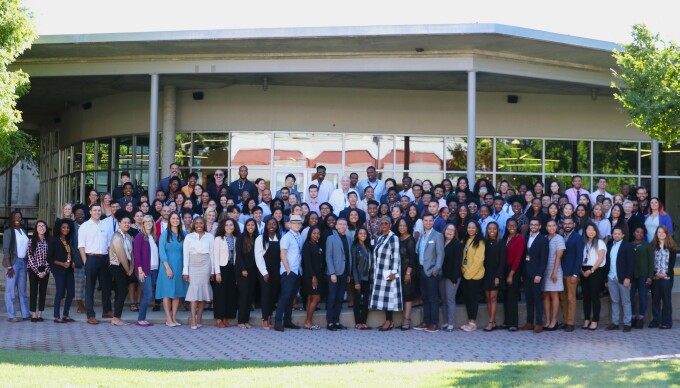Publicis’ Brian Vaught on the Multicultural Talent Pipeline

This month in Atlanta, Publicis Media launched the ninth edition of the Multicultural Talent Pipeline (MCTP), its annual two-day workshop that introduces potential new talent to the advertising/marketing industry. Over the years, the MCTP has become a vital piece of the overall Publicis Media strategy to increase diversity within its walls and to bring greater awareness of the advertising industry to young talent. Prior to the most recent MCTP, MediaVillage spoke with Brian Vaught, Senior Vice President of Talent Inclusion at Publicis Media, who shared his perspective on the MCTP event and the existing challenges and promise of diversity and inclusion within the industry.
Philip McKenzie: This is the ninth year for the Multicultural Talent Pipeline. What was the motivation and incentive for the original launch of this event?
Brian Vaught: The MCTP grew out of a group called Tapestry, which served as Starcom’s multicultural marketing arm. Very early on, that original team saw the need to both attract and retain diverse talent and that resulted in what we now know as the Multicultural Talent Pipeline. The scope has grown and changed from day one to now.

McKenzie: What unique challenges do the marketing and advertising industry face regarding inclusion?
Vaught: We have a really great talent pipeline, particularly at the entry level. The biggest challenge is to retain the mid-level talent that eventually becomes top-tier leadership. These opportunities exist not only at Publicis Media, but also throughout the broader advertising, marketing and media industries. Within our organization, we are creating internal programs designed to foster development in our teams. We recognize that retention is driven by giving our employees as many chances to develop professionally as possible. As an organization, we have to provide our employees with the best tools and support to ensure they are successful.
McKenzie: STEM is another area where you see an emphasis on building a pipeline of talent. Are there parallels to be drawn in both STEM and advertising and their respective approaches to attracting talent?
Vaught: There is certainly an intersection in the type of skills we find attractive in candidates both at Publicis Media and within the broader industry. At Moxie, based in Atlanta, we have developed the Future X Lab, which focuses on virtual reality, augmented reality and artificial intelligence. Publicis Media is not strictly media planning and buying, and we need to attract talent that is competitive in all of our businesses -- and that includes STEM. The relationships we build with universities and other organizations for our pipeline program have to address the wide range of talent we are seeking.
McKenzie: Over the nine years of the Multicultural Talent Pipeline how have you measured the success of the program?
Vaught: We track the success of the program very closely and we understand the value it adds to Publicis Media and the participating students. To date, over a quarter of MCTP attendees have received offers from Publicis Media or one of its partner companies. It is really important for us to track the progress of students who have gone through the MCTP. Quite a few participants are now in supervisory and managerial positions within Publicis Media, and some of them are now partnering with us to create and execute the MCTP program. Ultimately, their success is the proof of concept we need to keep doing the program. Since its inception, school partnership increased significantly by 175% and, according to a survey we did after the 2017 program, participant interest in careers in marketing increased by 23%. Those types of numbers demonstrate this program has also given Publicis Media and partner companies the unique opportunity to actively engage with rising talent and help them begin their journey as they embark on a career within the fields of media, advertising and marketing.

McKenzie: How are diversity and inclusion integrated into the Publicis Media professional experience?
Vaught: Diversity and inclusion is a top priority for our organization from the moment you join as a new hire. Within Publicis Media we have nine business resource groups: Égalité, GENNEXT, MOCA, Publicis Connects, PubVets, VivaWomen!, VivaWomen of Color, VivaMama and VivaTech. Employees are encouraged to enroll in various BRG's as they see fit and become fully immersed in these affinity groups. Our commitment is reflected in campaigns such as Love Has No Labels and End Family Fire in partnership with the Ad Council. Our teams and our work align with our broader company-wide diversity and inclusion goals.
Finally, we benefit from strong leadership, as Publicis Media Americas Chief Executive Officer Tim Jones, is at the forefront of this critical issue. Tim has been Publicis Media’s biggest supporter and champion for the organization’s MCTP program. Tim’s support over the years has been invaluable and has ensured we could partner with a crop of the best colleges and universities to identify multicultural students who might benefit most from participating in this two-day program.
McKenzie: Given the increased industry focus on diversity and inclusion why do you think there are still persistent gaps in addressing it?
Vaught: I wish I had the answer to solve this puzzle, but what I see is media and advertising being more proactive and thoughtful on these issues. How can we ensure that where we have programs in place, we work more collaboratively to address the gap? We need to document our successes and begin to establish industry standards that will in turn make all of this attention actually drive future change.
McKenzie: What role have clients played in actualizing this commitment?
Vaught: I think we have two really strong examples that highlight our commitment to diversity and inclusion that have resulted in some great wins in business. Our relationships with both USAA and Verizon, specifically in the creation of the Verizon AdFellows campaign, are clear examples of how our dedication aligns with that of the client. This comes down to a partnership and understanding. The question we’re continually asking ourselves is, “How do our best practices help our clients achieve their goals and objectives?”
McKenzie: What do you ultimately see as the future of the Multicultural Talent Pipeline?
Vaught: We know that the MCTP is an important program and is vital to the Publicis Media community and beyond. Our research has shown that in a pre-survey questionnaire, students were 5% more interested in careers in media vs. other marketing fields; post-survey that number showed students were 28% more interested in careers in media vs. other marketing fields. Additionally, they now had a more sustained interest in multicultural media/marketing in general. Through the MCTP and our success with the program we are bringing more people to the table, empowering them to pursue careers within our industry and to be successful. There is always more work to be done, but the value is undeniable toward changing the landscape of the industry.
Click the social buttons above or below to share this content with your friends and colleagues.
The opinions and points of view expressed in this content are exclusively the views of the author and/or subject(s) and do not necessarily represent the views of MediaVillage.com/MyersBizNet, Inc. management or associated writers.


